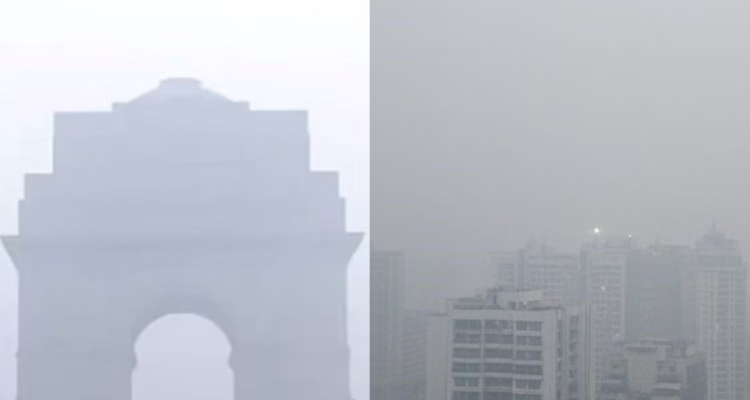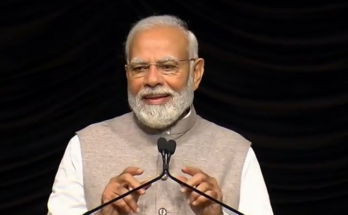
New Delhi: A thick blanket of smog has descended upon Delhi and Mumbai, with air quality continuing to deteriorate amidst ongoing cold wave conditions.
In the national capital, Delhi, the Air Quality Index (AQI) reached hazardous levels, registering at 401—classified as “severe”—as of 1 PM today. According to the Central Pollution Control Board (CPCB), several areas in Delhi recorded alarming AQI levels, including Wazirpur (449), Mundka (441), Anand Vihar (436), Okhla Phase-2 (407), Alipur (419), RK Puram (420), Dwarka Sector 8 (438), and Bawana (449).
The India Meteorological Department (IMD) has forecasted that Delhi and the surrounding National Capital Region (NCR) will continue to experience smog, along with dense to shallow fog, particularly during the night and morning hours over the next two days.
The AQI scale categorizes air quality as follows: 0-50 (Good), 51-100 (Satisfactory), 101-200 (Moderate), 201-300 (Poor), 301-400 (Very Poor), and 401-450 (Severe). With AQI levels in the “severe” range, health experts are advising caution, particularly for those with respiratory conditions.
On Sunday morning, the AQI in Delhi stood at 386, also in the “very poor” category, marking the second consecutive day of hazardous air quality.
In Mumbai, the AQI was measured at 176, which falls in the “Moderate” category, indicating that while air quality is somewhat better, it still poses potential health risks for sensitive groups.
As Delhi’s air quality continues to worsen, the Commission for Air Quality Management (CAQM) has enforced Stage 4 (GRAP-4) restrictions in the capital and surrounding areas, effective from Monday night. Under GRAP-4, all schools have shifted to online classes, and a ban has been imposed on Delhi-registered BS-IV or older diesel medium and heavy goods vehicles. Additionally, all construction activities in Delhi have been suspended.
On Saturday, the AQI in Delhi stood at 370, a “very poor” category level, with visibility further reduced. In response to the worsening air quality, the Delhi Airport issued an advisory, alerting passengers that low visibility procedures were in effect, although flight operations remained normal. Passengers were advised to check with their respective airlines for updated flight information.
The continuing air pollution crisis underscores the urgent need for measures to combat the smog and improve air quality in both cities, particularly during the cold wave period.



